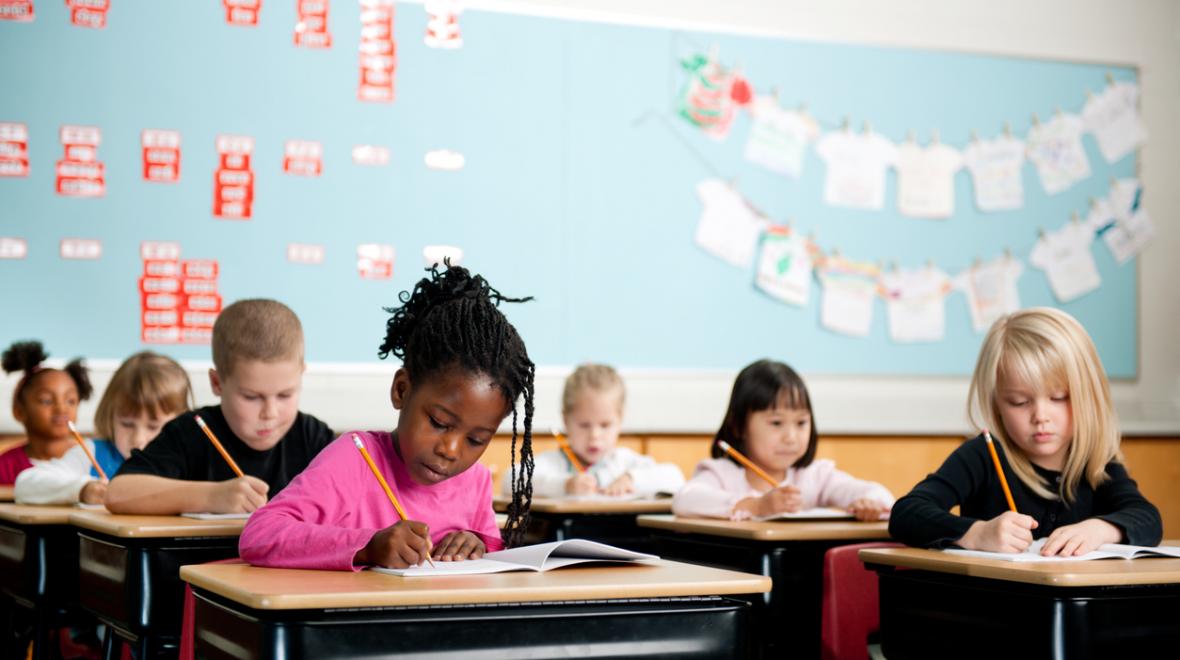
Editor's note: This article was sponsored by Giddens School.
Every child deserves a good education. But in Washington, a lot of factors that should be unrelated to education, such as ethnicity and family income, create stark differences in student achievement. How can schools overcome the opportunity gap to achieve equity in the classroom? At Giddens School, an independent school in South Seattle where justice is part of the mission, the concept of “student voice, student choice” is a key to the solution.
What is equity?
“A lot of times, people confuse equity and equality. In the classroom, equity means making sure that every student has the resources and support they need to be successful. Equality is when everyone gets the same thing, and that may not be successful for everybody,” says Rajeswari Sachdeva, assistant head of school for justice, equity and inclusion at Giddens School.
In an equitable classroom, “You provide the conditions for students to be able to express themselves individually and to receive instruction that is tailored to them,” says Mary Louise, assistant head of school for curriculum and instruction at Giddens School. That tailoring expands beyond the academic curriculum to include social-emotional learning and cultural competency.
Student voice, student choice
“‘Student voice, student choice’ is about enabling students to identify and voice their own needs,” explains Sachdeva. It begins with teaching the youngest students to articulate and value the things that make each of them unique.
“Allow space for students to say who they are and how they see themselves, and be accepting of their view. An example is respecting pronouns,” says Sachdeva.
Those voiced identities should influence the curriculum.
“In early childhood classes it’s typical practice to be following the student’s lead as they’re showing you their interests and passions,” says Louise. For older students, Gidden’s unique SPARK program coordinates multicultural social studies, art and science. SPARK units are taught through a social justice lens and are customized to reflect the diverse needs represented in the classroom.
In the curriculum and on the playground, another aspect of “student choice” is teaching problem-solving skills instead of providing answers.
“We embrace inquiry in everything. When kids have a conflict, we empower individuals to identify the problem and think of possible solutions,” says Louise. Adults coach students to consider different perspectives as they negotiate fair solutions for themselves.
Elements of equity
“Multicultural education recognizes that we are not all the same. We are different and we should celebrate those differences. You should see color,” says Sachdeva. At every age, students should see all kinds of diversity reflected in their history lessons, in their math story problems, in the books on the classroom shelves and on the posters on the walls. Sachdeva emphasizes that diversity is a lot more than race — it also includes gender expression, economic class, family structure, neurodiversity and physical abilities — everything that makes up an individual’s whole identity.
Besides offering positive representation, teachers need to check their own biases.
“Who gets sent to the office?” asks Sachdeva. If those kids tend to belong to one group, a teacher may be expressing bias in discipline — and reinforcing stereotypes to the rest of the class. Similarly, teachers need to work to avoid stigmatizing extra supports for children with learning challenges.
“A key thing about equity in education is that all the work is equity work. When we’re thinking about how to offer an equitable experience, it’s driven by as many diverse perspectives as possible. For educators, that means constantly refining your cultural competency, understanding the complexity of identity and how to navigate conversations across differences,” says Louise.
Providing an equitable education requires a high level of cultural competency from all of a school’s adults. Because systems of oppression are larger than the individual classroom, it takes the entire community to devise solutions to counteract those unfair systems. Those solutions are often resource- intensive. For example, an equitable classroom is technology-equipped because not all children have access at home.
Contextual support
It’s tempting to look for a set of rules for overcoming specific kinds of marginalization, but equitable support looks beyond the labels.
“Equitable means that every child is seen and every voice is heard and valued,” says Sachdeva. Giving each child what they need to be successful takes a lot of individual attention. Giddens teachers perform frequent low-stakes assessments to identify when a student needs extra support. Small class sizes help, but teachers also need training to continue improving their cultural competency. They need education specialists and other support staff. And they need support from home.
Parental partners
“When there’s an issue, the family or caregivers are brought in to be part of the solution. And just like the students, they’re encouraged to see the different perspectives. It’s helping families understand what we are seeing from our vantage point, and also listening to and valuing their perspective and the context in which families know their kids,” says Louise.
Through this process, the school and the family can identify the best way to meet the student’s needs.
Families don’t have to wait for a problem to become partners with their school. Regular communication with the teacher helps them know their student and the school community better. When problems do arise, established relationships make addressing problems easier. When you see inequity in your child’s class, Sachdeva recommends beginning with specific suggestions, for example, adding more authors of color to the books in the classroom library.
At home, families can use many of the same strategies as Giddens — celebrating differences, providing representation and approaching problems with an inquiry model — to help their children develop their own voice so they too can make the choice to become advocates for equity.
|
Sponsored by: |












